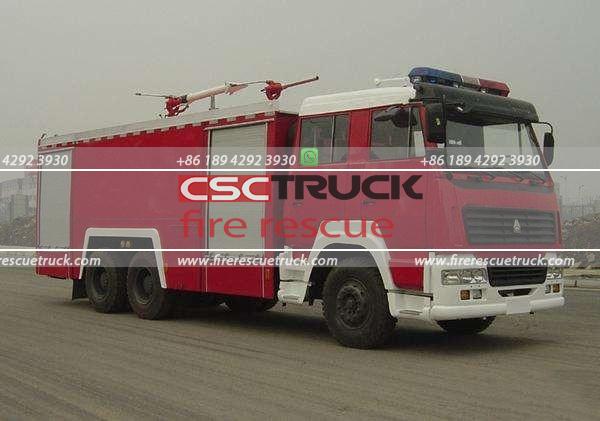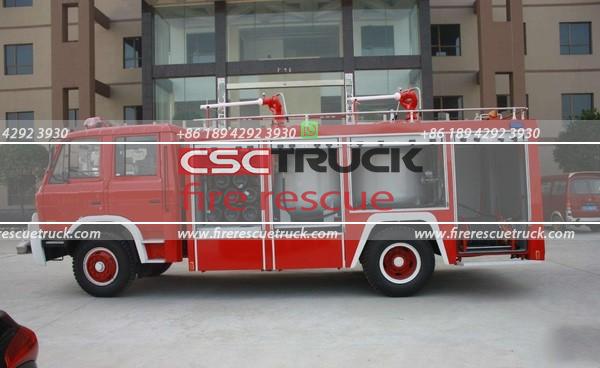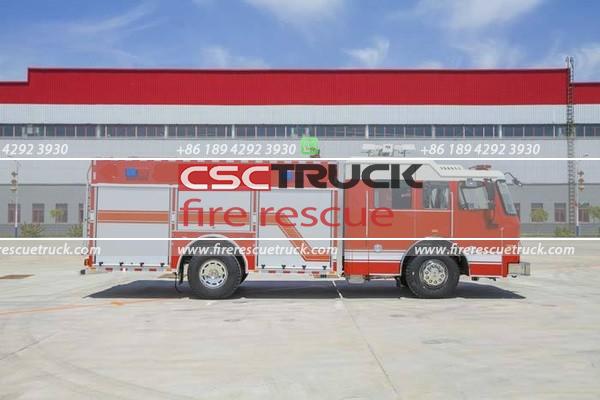What is a Quint Truck?
When it comes to fire apparatus, the world of firefighting is equipped with a variety of specialized vehicles designed to perform different tasks on the ground. One such versatile piece of equipment is the Quint truck. The term “Quint” derives from the Latin root “quinque,” which means “five.” As its name suggests, a Quint truck is a multi-functional fire apparatus capable of performing five essential tasks. This unique capability makes it a valuable asset for fire departments that need versatility and efficiency in a single piece of equipment. In this article, we will delve into the features, functions, advantages, and disadvantages of Quint trucks and their impact on modern firefighting.
The Five Functions of a Quint Truck
The Quint truck is designed to perform 5 critical functions that are typically divided among multiple fire apparatus. These include:
1. Pump Operation: A Quint truck comes equipped with a fire pump capable of delivering water at high pressure to extinguish flames. Depending on the model, a Quint truck’s pump capacity typically ranges from 1,000 to 2,000 gallons per minute (GPM). The pump’s power and efficiency are crucial when the truck is used to support firefighting operations directly.
2. Water Tank: Quint trucks also have an onboard water tank, which provides immediate water access before other water sources are established. The size of the water tank usually varies from 300 to 500 gallons, offering a temporary supply for extinguishing small fires or sustaining operations until a continuous water supply is secured.
3. Hose Storage: The Quint truck is designed with built-in hose storage, allowing it to carry various hose sizes and lengths. This enables it to quickly establish water supply lines to attack the fire or support other fire apparatus on the scene.
4. Aerial Ladder: One of the most distinguishing features of a Quint truck is its aerial ladder. The ladder’s height typically ranges from 50 to 100 feet or more, depending on the model. The aerial ladder serves as a means of reaching elevated areas, rescuing trapped individuals, and providing elevated water streams to combat large fires.
5. Ground Ladders: In addition to its aerial capabilities, a Quint truck also carries an assortment of ground ladders. These ladders are useful for accessing windows, roofs, and other hard-to-reach areas during firefighting and rescue operations.

Characteristics and Specifications
Quint trucks are built with a combination of features typically found in engines, ladders, and tankers. Because of this, they are often referred to as hybrid apparatus. The specifics of a Quint truck can vary based on the manufacturer, but several key characteristics are consistent across most models.
1. Chassis and Engine: Quint trucks are typically built on a heavy-duty commercial or custom fire apparatus chassis. The engine power is usually between 300 and 500 horsepower, ensuring that the vehicle can carry heavy loads and operate efficiently in emergencies.
2. Body Configuration: The body of a Quint truck is designed to house various equipment compartments, ladders, hoses, and the water tank. The layout is often streamlined for ease of access and optimized for rapid deployment of firefighting tools.
3. Control Systems: Modern Quint trucks are equipped with advanced control systems for operating the pump, aerial ladder, and other apparatus functions. These controls can be manually operated or through automated systems, making the operation smoother and more efficient.
4. Safety Features: Given the complexity of operations involving Quint trucks, they are equipped with multiple safety features, such as stability control, automatic aerial ladder deployment locks, and ergonomic controls to reduce the risk of injury to firefighters.
When to Use a Quint Truck
Due to its versatility, the Quint truck is a popular choice for departments that face a wide variety of emergencies. It is particularly useful in:
– Urban and Suburban Settings: Quint trucks are often deployed in areas where space is limited, and the ability to perform multiple tasks with a single piece of equipment is beneficial. In urban settings, where tall buildings are common, the aerial ladder function becomes invaluable for high-rise firefighting and rescue operations.
– Small or Volunteer Departments: Smaller or volunteer departments with limited resources often choose Quint trucks because they can serve as both an engine and a ladder truck. This minimizes the need for a larger fleet of specialized vehicles.
– First Due Response: When arriving first at a scene, a Quint truck can immediately start operations—whether establishing a water supply, attacking the fire, or initiating rescue operations—without waiting for other apparatus to arrive.

Advantages of a Quint Truck
1. Multi-Function Capability: The Quint truck’s ability to perform 5 critical functions reduces the need for separate vehicles for pumping, water supply, and aerial operations. This consolidation leads to more efficient fire ground operations.
2. Cost Efficiency: For smaller departments or those operating on a limited budget, a Quint truck provides cost savings by combining several apparatus into one. Maintenance, staffing, and operational costs can be lower compared to maintaining separate engines and ladders.
3. Space Efficiency: In tight urban settings or smaller firehouses, having a single vehicle that can serve multiple roles saves valuable space.
4. Rapid Deployment: With its multi-functional design, a Quint truck can begin multiple tasks upon arrival at a fire scene, providing a quicker response.
Disadvantages of a Quint Truck
Despite its benefits, there are some drawbacks to using a Quint truck:
1. Complexity and Training: Operating a Quint truck requires firefighters to be trained in both pump operation and aerial ladder deployment, which adds to training requirements and complexity.
2. Reduced Specialization: While a Quint can perform multiple tasks, it might not be as effective at each function compared to a specialized apparatus. For example, the pump capacity or aerial ladder reach may be lower than a dedicated pumper or ladder truck.
3. Maintenance Costs: Because of its complex systems, a Quint truck may require more maintenance, and repairs can be costly.

Quint Trucks in Modern Firefighting
The Quint truck’s role in modern firefighting continues to evolve. It is increasingly being adopted by departments looking to streamline operations and enhance efficiency. Technological advancements, such as improved control systems and lightweight materials, are making Quint trucks even more reliable and effective.
In summary, the Quint truck is a versatile and powerful tool in the firefighting arsenal. Its ability to perform 5 essential firefighting functions in a single apparatus makes it a valuable asset, especially for departments that need to maximize efficiency and resources. While it does come with some disadvantages, the benefits often outweigh the drawbacks, making the Quint truck a popular choice for many fire departments across the country.







